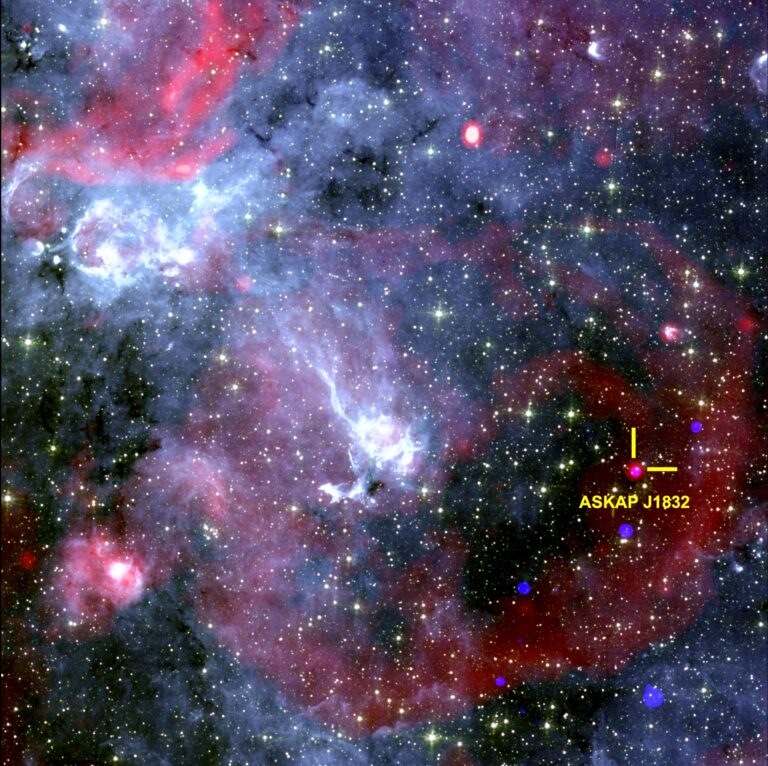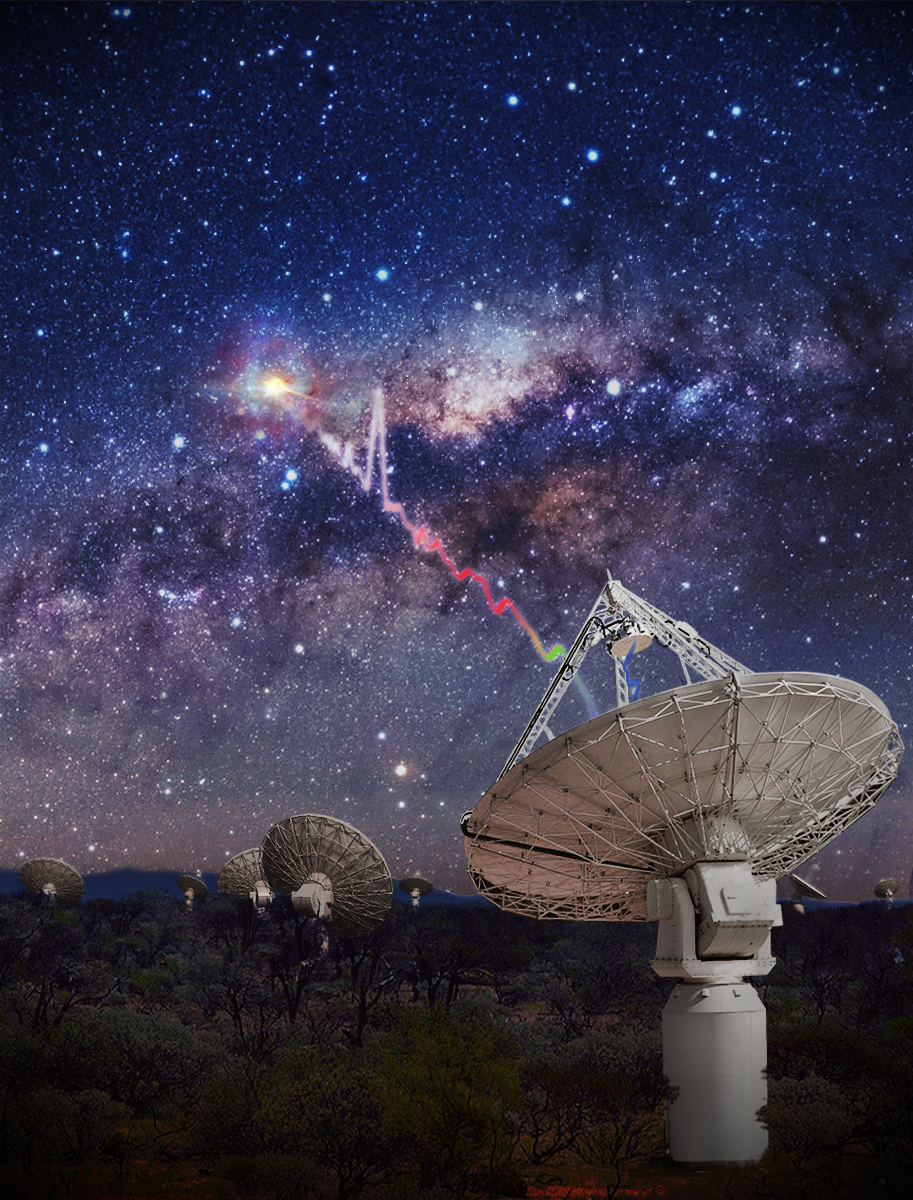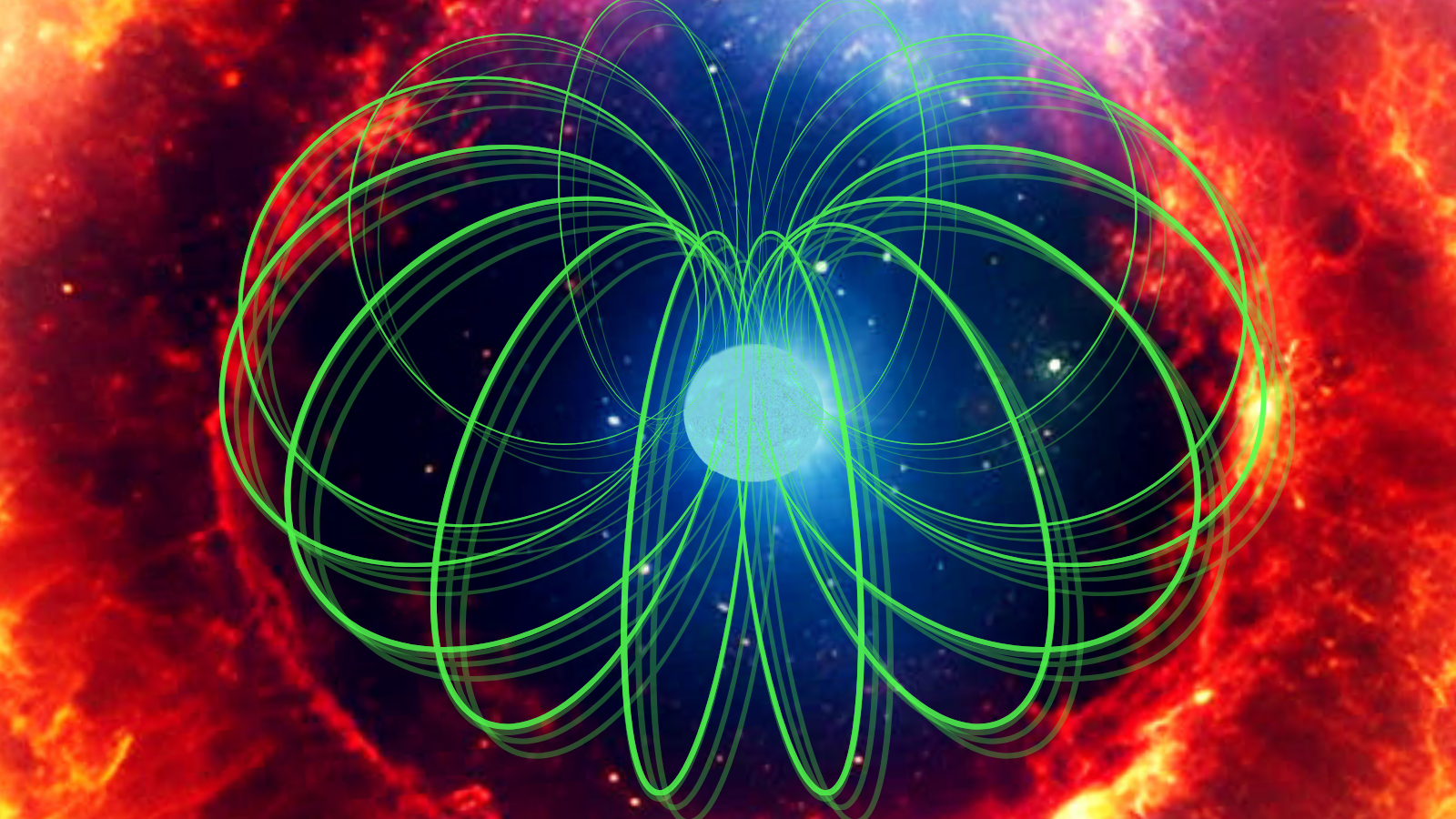Astronomers discover mystery cosmic body bursting with X-rays: 'This object is unlike anything we have seen before'
"This discovery could indicate a new type of physics or new models of stellar evolution."
One of the strangest cosmic objects ever seen just got even weirder — NASA's Chandra X-ray telescope caught it blasting out X-ray radiation and radio waves.
The mystery object, known as ASKAP J1832- 0911, is located within the Milky Way about 15,000 light-years away from Earth. It's now known to flash in both radio waves and X-rays for a two-minute period every 44 minutes.
This is the first time an object like this, a so-called "long-period transient" or "LPT," has been seen in high-energy X-ray light as well as low-energy radio wave light. The team behind this discovery hopes the finding could help reveal what these flashing objects actually are and how they launch their mystery signals.

However, not only is there no explanation for how the signals from LPTs are generated yet, but astronomers also don't know why these signals "switch on" and "switch off" at long, regular and unusual intervals.
"This object is unlike anything we have seen before," team leader and Curtin University researcher Zieng (Andy) Wang said in a statement.
Chandra gets lucky. Star doesn't.
LPTs are flashing cosmic bodies that emit radio pulses separated by a few minutes or a few hours. They were first discovered in 2022, making them a very recent discovery. Since this initial detection, astronomers from around the globe have discovered a further 10 LPTs.
None seem to be quite like this one, though — not yet anyway.
ASKAP J1832- 0911 was first spotted by astronomers using the Australian Square Kilometre Array Pathfinder (ASKAP) radio telescope in Wajarri Country, Australia.
The team then followed this initial LPT discovery in radio waves with further investigation using NASA's Chandra X-ray telescope, shockingly finding that its highly periodic and unusual radio emissions are mimicked in X-rays.

In fact, catching ASKAP J1832- 0911 throwing its regular X-ray tantrum was a matter of good fortune.
Get the Space.com Newsletter
Breaking space news, the latest updates on rocket launches, skywatching events and more!
"Discovering that ASKAP J1832-0911 was emitting X-rays felt like finding a needle in a haystack," Wang said. "The ASKAP radio telescope has a wide field view of the night sky, while Chandra observes only a fraction of it. So, it was fortunate that Chandra observed the same area of the night sky at the same time."

The team believes the true nature of ASKAP J1832-0911 is a dead star, they just don't quite know what form that star takes. A highly magnetic neutron star, or "magnetar," is one option, and a a white dwarf — the kind of stellar remnant the sun will leave behind when it dies in over 5 billion years — is another.
“ASKAP J1831- 0911 could be a magnetar, the core of a dead star with powerful magnetic fields, or it could be a pair of stars in a binary system where one of the two is a highly magnetized white dwarf, a low-mass star at the end of its evolution," Wang said. "However, even those theories do not fully explain what we are observing.
"This discovery could indicate a new type of physics or new models of stellar evolution."
The hope is the discovery that at least one LPT emits X-rays in the same way it does radio waves could help shed light on the mysterious origins of these objects.
That's because the fact that X-rays are so much more energetic than radio waves are means whatever the object behind ASKAP J1832- 0911 is, it must be able to produce both types of radiation. That should narrow down the field of suspects — and, there should be more LPTs out there acting just like this one, the study team reasons.
"Finding one such object hints at the existence of many more," Nanda Rea, study team member and a researcher at the Institute of Space Science (ICE-CSIC) and Catalan Institute for Space studies (IEEC), said in the statement. "The discovery of its transient X-ray emission opens fresh insights into their mysterious nature."
The team's research was published on Wednesday (May 28) in the journal Nature.
Join our Space Forums to keep talking space on the latest missions, night sky and more! And if you have a news tip, correction or comment, let us know at: community@space.com.

Robert Lea is a science journalist in the U.K. whose articles have been published in Physics World, New Scientist, Astronomy Magazine, All About Space, Newsweek and ZME Science. He also writes about science communication for Elsevier and the European Journal of Physics. Rob holds a bachelor of science degree in physics and astronomy from the U.K.’s Open University. Follow him on Twitter @sciencef1rst.
You must confirm your public display name before commenting
Please logout and then login again, you will then be prompted to enter your display name.
